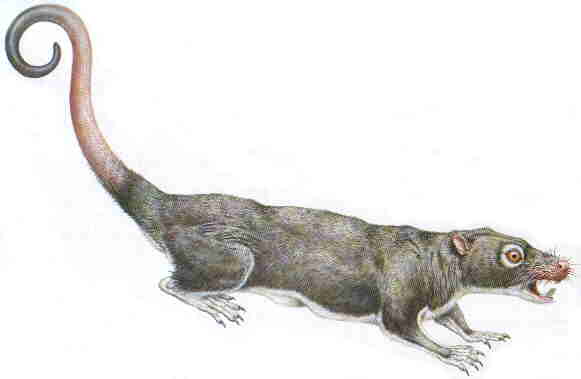 |
 |
 |
 |
 |
Produced
by the Population Genetics and Evolution class, Furman University |
||||
 |
 |
 |
 |
 |
Produced
by the Population Genetics and Evolution class, Furman University |
||||
 |
The
Paleogene: Ptilodus |
 |
||
| Ptilodus,
a genus of small rodent-like mammals that belonged to the order of Multituberculates,
lived during the Paleocene in North America (Jehle 2010). Ptilodus
has no modern ancestors, but was thought to be most similar to a modern
day squirrel (Weil 1997). They were adapted to live in trees, as they
had sharp claws and mobile feet that could be reversed backwards to climb
head first, down a tree. Their prehensile tails were hairless and used
as a fifth limb (Jehle 2010). Ptilodus were dominant herbivores and granivores (White and Kazlev 2010). Their teeth are similar to modern day rodents, as they had enlarged front teeth, specifically the pair of lower incisors. Forming large serrated blades in the back of their mouths, their last lower premolars were used to grind up plants and grains. This type of grinding teeth are called plagiaulacoid. The most complete skull of Ptilodus was found in Canada (Jehle 2010). Page by Julia Bobo |
 |
| Artists interpretation of Ptilodus, taken from: Paleocene Mammals of the World. | |
|
Jehle M. 2010. Paleocene Mammals of the World. Accessed on March 29, 2010. White T and Kazlev MA. 2010. Mammaliformes, Multituberculates. Accessed on March 29, 2010. Weil A. 1997. Introduction to Multituberculates. University of California Museum of Paleontology. Accessed on March 29, 2010. |